Day in the Life of a Woman Historian: 1930s
What was it like to be a woman student of History at St Andrews in the 1930s? Taking inspiration from popular modern day ‘Day in the Life’ blog posts and YouTube videos, a group of current undergraduates explored personal papers, University Calendars, photographs, and records from the University’s Special Collections, to try to bring to life the experiences of women History undergraduates at St Andrews.
The 1930s was a decade characterised by tense and turbulent political circumstances across Europe and around the world. The changing conditions of the interwar period must have impacted the student experience, particularly as the country edged towards the outbreak of war by the end of the decade. With expanding opportunities for women students and history unfolding around them, the 1930s would have undoubtedly been a fascinating time to be a woman history student.
Morning
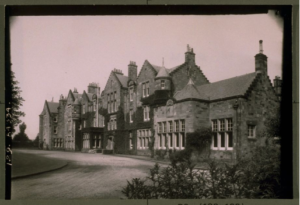
Although in the 1930s many women students at St Andrews were from the local area, and would therefore commute to University, those who were from further afield lived in the University’s residences for women students or local accommodation in the town. Although today accommodation at St Andrews is mixed, in the 1930s women students either lived in University Hall or Chattan House, which is now McIntosh Hall.
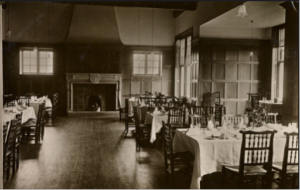
Fortunately for women history students who weren’t fond of getting up early, history classes did not begin until late morning, which gave them time to enjoy breakfast, maybe catch up with friends or read the latest edition of the College Echoes student magazine that many students contributed to.
Modern History special classes and honours classes ran at 11am, with the general class following at noon. For students in the Modern History honours class, lectures focused primarily on British Constitutional History, whereas the syllabus was much broader in the general and special classes, in which lectures covered British History from the Middle Ages to the 1930s. For students in Ancient History, classes focused on two short periods of Greek and Roman History and sought to connect these periods to a broad sketch of Ancient History.
The 1935 Calendar also provides fascinating insights into the wide variety of topics available to students who studied Medieval History. Led by Professor Baxter, students in the honours class would meet three times and week and studied topics such as: The Church and State in Medieval Europe, from the Pontificate of Boniface VIII till the conclusion of the Council of Basel, The Growth of the English Common Law and the History of Administration in Medieval England, and Scottish History from 1567 till 1648. It is likely that many students studying History or Modern History at honours would have attended these lectures as they were considered supplementary to these degree pathways.
In the first half of the twentieth century, undertaking joint degrees was also a popular option for women history students, and so many would have also attended lectures in subjects such as English alongside History. To find out more about the early women historians who studied joint degrees, take a look at this post by Georgia Armour. (Hyperlink to the post about joint degrees)
Afternoon
In between lectures, or after they had finished for the day, women students would have likely spent some time in the afternoon studying for their classes or preparing for examinations. Just like today, students would have referred to the recommended texts on their syllabus to prepare for classes and exams. Some of the books they may have read may have included G.M. Trevelyan’s History of England and A. Hassall’s The Balance of Power. Although the history courses were broad in their chronological scope in the 1930s, it appears that the majority of the course related to constitutional and military history, which may have felt frustrating to women historians who wished to study topics outside of these. Women students likely would have gone to the Women’s Union on North Street to undertake some reading, as the Union contained both a reading room that had a small library and a silent room, described as a place where ‘one many swot in warmth and in an atmosphere free from the smell of musty tomes.’
For honours students, afternoons in the weeks and months leading up to exams must have been filled with studying as the honours examination in History consisted of 11 papers! Women students may also have attended the extra honours classes that were offered on primary source analysis and historiography, particularly if they hoped to go on to further study after their undergraduate degree, as we saw more women doing by the middle of the twentieth century.
On Tuesdays, Wednesdays and Thursdays, women students may have taken a break from studying to attend a class at the women’s gymnasium on Butts Wynd, just around the corner from the Women’s Union. Classes were offered in physical training, folk dancing, badminton and indoor games. Others may have chosen to return to their residence to play sports with friends or receive extra tuition. On warmer days, students may have taken a stroll down to West Sands to enjoy the offerings of the tea room.
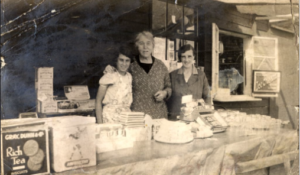
Evening
Women students in the 1930s had very active social lives, and there
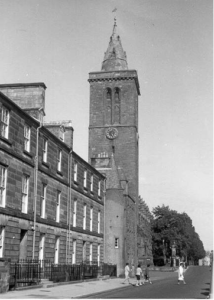
certainly wasn’t a lack of events and activities to keep students entertained in the evenings. The main hub for social activities was found at the Women’s Union, located next door to the Men’s Union at 79 North Street, now the ASC. The Women’s Union, or WU, was run by a committee of female students and organised debates, dances and socials for women students at St Andrews. These included bejant teas for new students, the night gaudeamus and ‘smokers’, mixed social nights organised with the Men’s Union that were described as ‘so characteristic of student life in St Andrews.’
For those who didn’t live in University residences, the Town Students’ Association hosted events such as ‘Flapper Dances’ and ‘Moonlight Walks’ to help women students find a sense of community and provide spaces for them to come together.
Outside of social events, there were a number of societies and organisations that women were able to join. For women interested in student representation, there were 3 posts on the Student Representative Council (SRC) that women were eligible to run for, including the position of Women’s Union President. Women were also able to join the women’s branch of the Christian Student Movement at St Andrews, which held weekly meetings, study circles and devotional meetings. Many of the societies, however, held meetings in the Men’s Union, which made it difficult for women to participate in mixed group activities that hadn’t been organised by the Women’s Union, or at least would have likely made it more uncomfortable, given the male default and privilege in these spaces.
After an evening of socialising or taking part in extracurricular activities, women students would have returned home or to their residences, maybe had a chat with the warden or some friends and prepared for another day studying at the University of St. Andrews. By the end of the decade, however, the days of women history students may have looked very different, as suggested by this image of a gas mask fitting taking place in the town in 1940; a stark reminder of what was to come in the following decade.
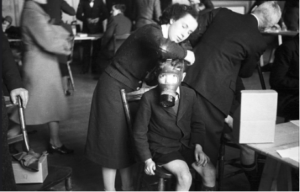
This is just one of the blogs in a series of ‘days in the life’ from various decades. If you’ve enjoyed this post, please check out the other decades: 1960s, 1980s, and today.
References
St. Andrews University Calendar, 1935-6, University of St. Andrews Special Collections
Student Guide to Life in the University of St. Andrews, 1930, University of St. Andrews Special Collections.
This blog post was written in 2021 by Octavia Chappell, who is going into her fourth year studying History and International Relations at the University of St. Andrews.
